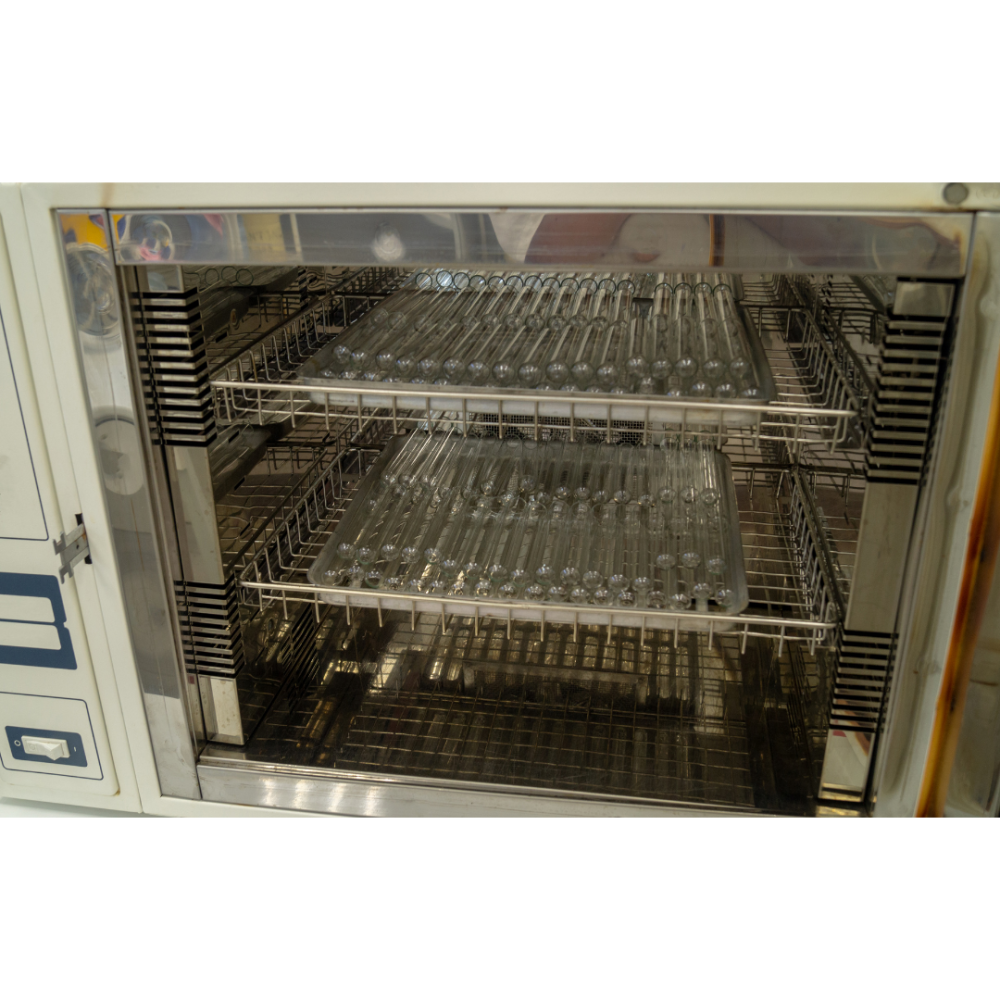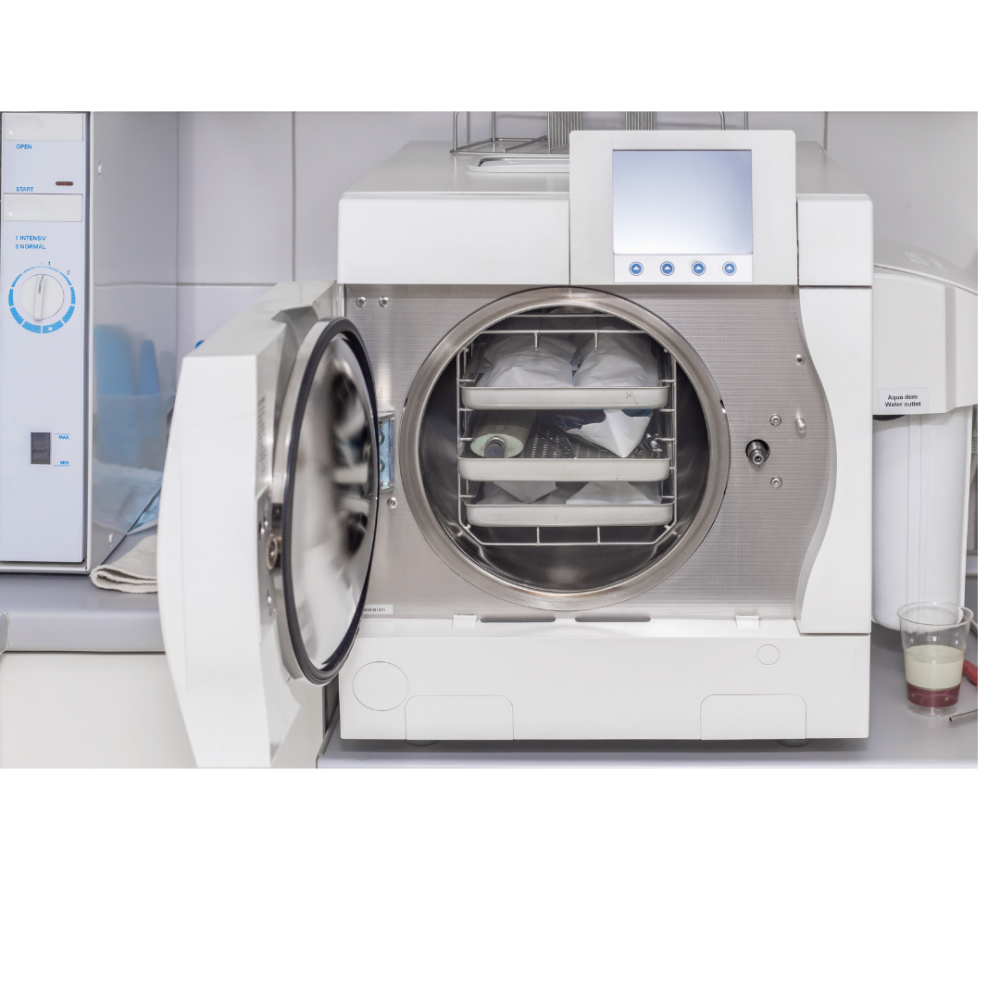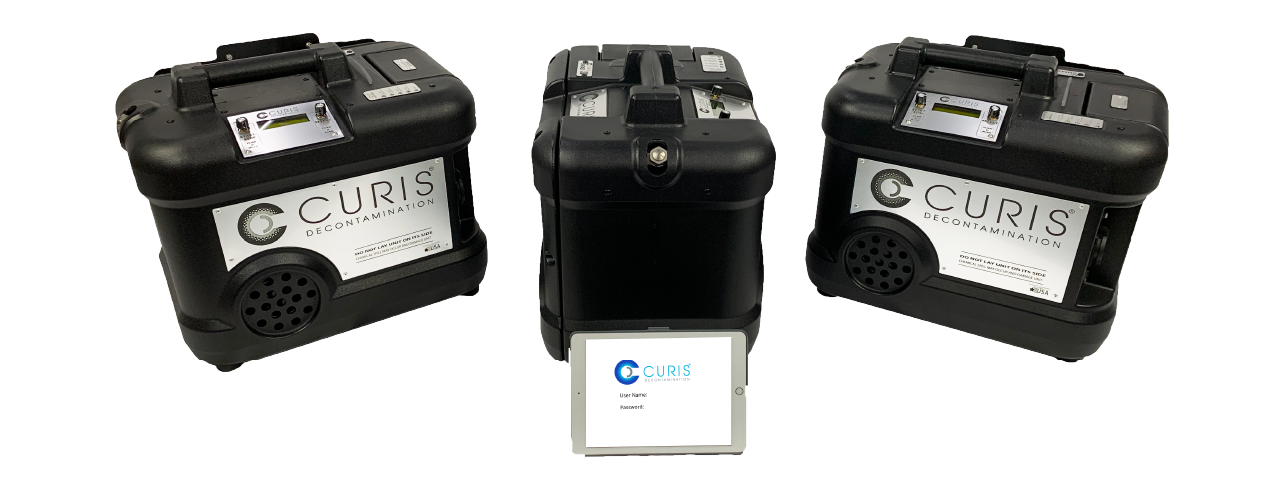An Overview of the Most Common Methods of Pharmaceutical Decontamination
Maintaining a sterile environment is essential for all stages of pharmaceutical development, from research and development to manufacturing for distribution. To maintain hygienic conditions in their facilities and ensure the integrity of their products, the pharmaceutical industry and related establishments must follow stringent Good Manufacturing Practices (GMPs). These practices include employing aseptic techniques and biodecontamination protocols and technology that achieve sterilization. To maintain pace for discovery or production, pharmaceutical manufacturers and life science facilities must find practical and new ways of keeping their facilities clean and free from contamination and dangerous microorganisms.
Here are the four most common methods pharmaceutical industries employ in their upstream or downstream processes to ensure their laboratories or production facilities are free from contamination:
Dry Heat Sterilization
 Dry heat sterilization is a method that is commonly applied in the pharmaceutical industry against moisture sensitive equipment that cannot be sterilized by other methods. It employs elevated temperatures over extended periods of time. Common temperatures used include 170 degrees C for one hour, 150 degrees C for 150 minutes, and 160 degrees C for 120 minutes. These temperatures are reached through various methods. One method includes the use of hot air ovens that are slowly heated by coils attached to the bottom of the units. The hot air that is generated permeates throughout the oven, achieving sterility. Another method that is used is called a mechanical convection sterilizer. It includes a fan that consistently rotates to move the heated air throughout the chamber to achieve sterility.
Dry heat sterilization is a method that is commonly applied in the pharmaceutical industry against moisture sensitive equipment that cannot be sterilized by other methods. It employs elevated temperatures over extended periods of time. Common temperatures used include 170 degrees C for one hour, 150 degrees C for 150 minutes, and 160 degrees C for 120 minutes. These temperatures are reached through various methods. One method includes the use of hot air ovens that are slowly heated by coils attached to the bottom of the units. The hot air that is generated permeates throughout the oven, achieving sterility. Another method that is used is called a mechanical convection sterilizer. It includes a fan that consistently rotates to move the heated air throughout the chamber to achieve sterility.
Limitations of Dry Heat Sterilization
The elevated temperatures limit the types of instruments that can be sterilized. For example, petroleum products, powders, and certain metals are targeted with this sterilization process because they cannot be exposed to moisture. Dry heat sterilization is also highly effective at removing heavy molecular pyrogens (fever causing agents) from pharmaceutical vials as well, which make it a popular choice.
While dry heat sterilization is highly effective and relatively inexpensive, it is time consuming compared to other methods. This is because it requires time to both heat up and cool down. Furthermore, it can only be used for sterilizing a small group of items and will melt commonly used materials like plastic which can limit its application.
Moisture Heat Sterilization
 Moist heat sterilization, often referred to as an autoclave, is a well-documented method for sterilization across almost all scientific sectors for its efficaciousness and ease. This method functions by applying heat and water to form a high temperature and moist environment. The steam eliminates all microorganisms including dangerous pyrogens by denaturing both enzymes and proteins. Moist heat sterilization is also a primary method in the pharmaceutical industry for equipment that is not heat or water sensitive, or in cases where degradation might occur.
Moist heat sterilization, often referred to as an autoclave, is a well-documented method for sterilization across almost all scientific sectors for its efficaciousness and ease. This method functions by applying heat and water to form a high temperature and moist environment. The steam eliminates all microorganisms including dangerous pyrogens by denaturing both enzymes and proteins. Moist heat sterilization is also a primary method in the pharmaceutical industry for equipment that is not heat or water sensitive, or in cases where degradation might occur.
According to United States Pharmacopeia (USP), a leading authority on industry standards, temperatures used for moist heat sterilization fall between 118 degrees C and 134 degrees C, although some can achieve temperatures higher than this. The most common combined treatment time is conducted at 121 degrees C for 15 minutes. Treatments can be validated using biological and chemical indicators.
Limitations of Moist Heat Sterilization
While moist heat sterilization is highly efficacious, there are some downsides to this treatment process. For example, autoclaving can degrade instruments and equipment over time. The moisture can also cause certain metal equipment to rust following repeated exposure. These challenges must be considered when choosing this method.
Gaseous Sterilization
Gaseous sterilization is a relatively new technology that utilizes a chemical sterilant in gaseous form to penetrate and treat contaminated equipment or items requiring sterile technique. Unlike other methods in the pharmaceutical industry, gaseous delivery is ideal for sterilizing pharmaceutical equipment that is heat-sensitive like plastic and rubber. The most common forms of gaseous sterilization currently employed in the pharmaceutical industry are ethylene oxide, hydrogen peroxide, and chlorine dioxide.
Ethylene Oxide
Ethylene oxide decontamination is a popular method employed by pharmaceutical facilities. This gas is low temperature, which makes it particularly suitable on temperature sensitive devices. Ethylene oxide has frequently been used to externally sterilize “pre-filled syringes, vials, or cartridges where the goal is that EO does not reach the pharmaceutical product.” (Pharmaceutical Technology, 1) It has been known to penetrate certain packaging like polyethylene to allow for complete sterilization of its contents. Ethylene oxide sterilization follows three main phases that include conditioning, sterilization, and ventilation. The first phase ensures that the temperature and humidity are at their proper levels to allow for successful sterilization. The next phase is simply when sterilization occurs. The last phase removes residual ethylene oxide from the space via aeration.
Concerns When Using Ethylene Oxide
While ethylene oxide is a highly efficacious treatment, it is a known human carcinogen and can cause severe pulmonary disorders if inhaled.
Hydrogen Peroxide
Hydrogen peroxide disinfection and sterilization is another treatment method that is widely utilized in the pharmaceutical industry against temperature sensitive devices and has been found to have good material compatibility with electronics. It can be found in concentrations ranging from 7% to 59% depending on the manufacturer. These solutions should be paired with specific fogging devices for EPA registration to limit liability of employing non-federally regulated solutions or systems. These fogging systems can deliver vapor, aerosol, or a combination of both for thorough biodecontamination. Hydrogen peroxide is also eco-friendly, non-mutagenic, and breaks down to both oxygen and water that leaves no corrosive residues behind. This chemical targets pathogens by oxidizing the cell walls of bacteria and breaking down proteins in other microorganisms. When applying hydrogen peroxide fog, as with any disinfectant or sterilant, it is imperative to follow the directions on that product’s EPA label. A large benefit of hydrogen peroxide fogging is the fast turnaround times, ease of application, and ability to use Geobacillus stearothermophilus biological indicators for validation and absence of harmful residues.
Concerns When Using Some Hydrogen Peroxide Systems
Many hydrogen peroxide disinfection systems utilize high concentrations of hydrogen peroxide solution (35-59%), which can require extra care when handling, produce high vapor concentrations which require constant monitoring throughout the process, and necessitate special shipping.
CURIS System Hybrid Hydrogen Peroxide™ Fogging
 CURIS System Hybrid Hydrogen Peroxide™ (HHP™) fogging devices use an EPA-registered 7% H2O2 solution and patented Pulse™ technology to effectively treat enclosures and equipment within the pharmaceutical industry. This integrated system is a trusted method of biodecontamination for its efficacy against high-level bacterial spores, remote start, and quicker disinfection times than traditional high-consequence concentrations. CURIS biodecontamination systems can be applied to large enclosures of up to 10,000 cubic feet or equipment like biological safety cabinets, isolators, pass through chambers, and more with a proven 6-log reduction. Both the fogging devices and solution are dual registered with the EPA to be used with one another, setting CURIS apart from other hydrogen peroxide systems.
CURIS System Hybrid Hydrogen Peroxide™ (HHP™) fogging devices use an EPA-registered 7% H2O2 solution and patented Pulse™ technology to effectively treat enclosures and equipment within the pharmaceutical industry. This integrated system is a trusted method of biodecontamination for its efficacy against high-level bacterial spores, remote start, and quicker disinfection times than traditional high-consequence concentrations. CURIS biodecontamination systems can be applied to large enclosures of up to 10,000 cubic feet or equipment like biological safety cabinets, isolators, pass through chambers, and more with a proven 6-log reduction. Both the fogging devices and solution are dual registered with the EPA to be used with one another, setting CURIS apart from other hydrogen peroxide systems.
Learn more from our Peer Reviewed Articles and White Papers.
Chlorine Dioxide
Chlorine dioxide is another alternative that can be applied in the pharmaceutical industry to heat-sensitive equipment and devices. This gas acts as an oxidizing agent to destroy the cell wall and break up the cell itself, resulting in a kill.
Limitations and Concerns with Chlorine Dioxide Gas
While its effectiveness against microorganisms is apparent, there are concerns over the safety of staff if exposed. ClO2 can cause irritation to the mucus membranes including the eyes, lungs, and nose and has been known to cause pulmonary edema. The process of employing chlorine dioxide can be dangerous, as well, since electrical charges may cause the gas to combust. For this reason, all lights must be turned off during application. Additionally, this process can be costly and time-consuming when compared to other methods previously discussed.
UV Light
UV-C ultraviolet radiation is an alternative approach of decontamination in the pharmaceutical industry. Instead of using chemical disinfection, this technique uses ultraviolet light to inhibit microorganisms from replicating by destroying their DNA or RNA. This light travels in wavelengths, usually around 256 nm to be effective. When these wavelengths increase in number, so does the kill rate of the microorganisms being targeted.
Limitations of UV Decontamination
UV-C can only sanitize areas where light is directly exposed. These are typically reserved to specific areas in the pharmaceutical facility like pass boxes or laminar air flow units because of time constraints. This process is not as effective as other chemical or heat-based methods, with an efficacy rate of about 90%-99.99%. UV-C sanitizing can be inhibited by dirt and dust that cover microorganisms. Further training is needed for staff who employ this method due to the ongoing risks of burns to the skin and eyes.
Looking For a Proven Decontamination Solution?
Reach out to the professionals at CURIS today if you're looking for a biodecontamination system or service to implement comprehensive contamination control in your facility. CURIS has the solutions you need and can help you meet regulatory requirements while optimizing your production time.
Sources:
Centers for Disease Control and Prevention. (2016, September 18). Other sterilization methods. Centers for Disease Control and Prevention. Retrieved December 9, 2021, from CDC Infection Control Guidelines; Sterilization and other methods.
Sterigenics. (2019, November 27). Ethylene oxide (EO or ETO) sterilization for pharmaceutical products. Pharmaceutical Technology. Retrieved December 9, 2021, from https://www.pharmaceutical-technology.com/products/ethylene-oxide-eo-or-eto-sterilization-for-pharmaceutical-products/.
Centers for Disease Control and Prevention. (2016, September 18). Ethylene oxide sterilization. Centers for Disease Control and Prevention. Retrieved December 9, 2021, from https://www.cdc.gov/infectioncontrol/guidelines/disinfection/sterilization/ethylene-oxide.html.
Bio, S. (2021, November 18). Moist heat sterilization principle, advantages, disadvantages. Microbiology Note. Retrieved January 13, 2022, from https://microbiologynote.com/moist-heat-sterilization-principle-advantages-disadvantages/
Rashed, A., Hetta, A., Hashem, Z., & El-Katatny, M. (2020, May 4). Validation of moist and dry heat processes used for sterilization and depyrogenation during ampoules manufacturing. Journal of Advanced Biomedical and Pharmaceutical Sciences. Retrieved January 13, 2022, from https://jabps.journals.ekb.eg/article_87312_85a79fbd46a35b9b10c9f3459d4c2530.pdf
Boca, B. M., Pretorius, E., Gochin, R., Chapoullie, R., & Apostolides, Z. (2002, September). An Overview of the Validation Approach for Moist Heat Sterilization, Part 1. Pharmaceutical Technology. Retrieved January 13, 2022, from
https://citeseerx.ist.psu.edu/doc_view/pid/bf154485b4d5fa0b33d6583f0953fd74ee4bb4ff